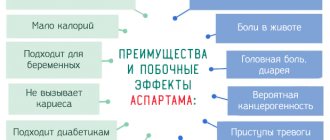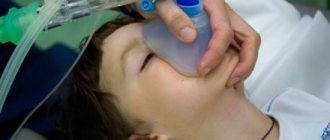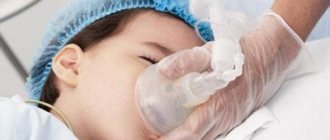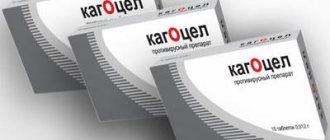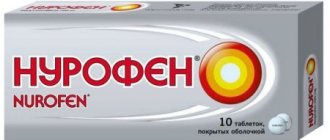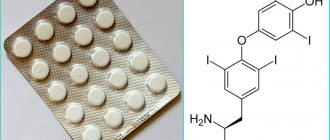Lidocaine is a local anesthetic that is used in various fields of medicine. There are several forms of the drug, such as solution, gel, ointment, eye drops, lidocaine spray and lidocaine patch. Let's look at the features of each type of lidocaine, and most importantly, how to safely treat with it.
life.ru
Basic information
There are several dosage forms: solution, gel, ointment, spray, eye drops. In medical institutions, an injection form and spray are used.
Mechanism of action
Drugs belonging to class IB are used to reduce ventricular arrhythmia.
Although they are not strong enough antiarrhythmics, they have minimal effect on the atrial myocardium. In addition, they do not directly close potassium channels.
Pharmacodynamics
The local anesthetic effect is possible due to the stabilization of neuronal membranes, which reduces their permeability to sodium ions. This blocks the reproduction and transmission of nerve signals, suppresses the transmission of both pain and other modalities of signals.
Its anesthetic effect is 1.5-6 times more powerful than procaine.
Applied topically, it has a vasodilating property and does not irritate tissues.
The antiarrhythmic effect is achieved by reducing the duration of the potential action and the effective refractory time.
At medicinal levels, it increases conductivity in the Purkinje branches, eliminating the risk of the “
re- entry” phenomenon, in particular in case of existing ischemic lesions of the heart muscle (for example, during a heart attack).
It has virtually no effect on the conductive and contractile abilities of the myocardium (with the exception of elevated, close to toxic, norms). The negative inotropic effect is small and short-term with accelerated administration of the drug at high rates.
Pharmacokinetics
Medicines in this group have fast kinetics. The level of absorption when administered parenterally depends on the location of administration and dose. The highest concentration in the blood plasma, with a jet injection intravenously, is achieved after 3-5 minutes, with an intramuscular injection - 5-15 minutes.
Binds to plasma proteins 50-80%. Bioavailability is 6-9 minutes. First of all, it penetrates into tissues that are fairly well saturated with blood - the heart, brain, spleen, lungs, liver. Then - into muscle and fat. Passes through the blood-brain and placental barriers (40% of the amount in the plasma of the woman in labor).
The metabolic process takes place in the liver with the formation of metabolites in active form.
The half-life is from 1.5 to 2 hours, in newborns - 3 hours, with prolonged intravenous administration - from 3 hours or more.
Eliminated by bile, as well as by the kidneys (about 10% unchanged).
Indications
Lidocaine is used in medicine in two areas - anesthesia and cardiology. Specifically, it is used for the following purposes:
Prohibitions
Whether a drug is dangerous depends on how well it is used. In particular, the fact that it has contraindications, both absolute and relative, should be taken into account. It is not recommended to use the injection medicine on your own to avoid negative consequences.
It is very important to take into account contraindications in the sense that otherwise lidocaine poisoning is likely.
It is prohibited to use the medicine in the following cases:
- hypersensitivity to active substances;
- pathologies of the brain or nervous system of an infectious nature;
- bleeding;
- pregnancy and lactation;
- myasthenia gravis;
- tumor formations in the brain.
Contraindications also exist for some age groups. For example, the drug should not be used in the treatment of children under 18 years of age.
In addition, it is dangerous to inject the substance into the cervix of pregnant women in the presence of late toxicosis, or if the fetus is post-term or the process of its development is disrupted.
The drug has contraindications in the presence of the following specific diseases:
- atrioventricular block (II and III degrees);
- heart failure ( II and III degrees);
- obvious bradycardia;
- acute kidney failure;
- severe symptoms of weakness of the cardiac sinus node;
- low blood pressure;
- arrhythmia in the medical history and other cardiac pathologies;
- blood clotting disorder;
- epilepsy.
Side effects
The drug may cause negative effects. Among them:
- headache;
- photophobia;
- tinnitus;
- diplopia (double vision);
- tremor of the limbs;
- feeling of heat, fever;
- bradycardia;
- dizziness;
- nausea and vomiting, numbness of the tongue;
- confusion of consciousness, up to loss;
- allergic manifestations, anaphylactic shock is not excluded.
Characteristics of the drug
Lidocaine is available in solution and spray form. Has an anesthetic effect. It is characterized by:
- rapid development of the desired effect;
- numbness occurs 1 minute after administration;
- transformation in the liver;
- high rate of absorption from the gastrointestinal tract;
- limited use in children under 1 year of age.
The maximum daily dose for adults is 0.3 g. If it is exceeded, intoxication develops. At the age of 1 to 12 years, the drug is calculated based on body weight, which is equal to 5 mcg/kg. The permissible quantity per day is always taken into account. The anesthesia lasts for 10 or 20 minutes. For intravenous use, 1 hour.
It enters the systemic circulation during intercostal blockade. Also with the introduction of Lidocaine into the epidural space, into the subcutaneous tissues and plexus of the shoulder. The main condition for ensuring an overdose is concentration. There is a linear relationship between its amount and the level of the drug in the blood.
Where is it used?
The solution is used for regional, local and conduction anesthesia for various medical procedures. Spray for surface use only. Applicable:
In dental practice:
- tooth extraction;
- removal of stones;
- suturing the mucosa;
- installation of crowns;
- anesthesia of the future injection site.
Gynecology:
- minor interventions on the vagina;
- processing the incision when dissecting the perineum.
ENT area:
- against the background of electrocoagulation;
- operations in the nose area.
Surgery:
- superficial skin anesthesia;
- when receiving burns or small scratches.
To achieve the effect, usually spray 2 times. In obstetric practice it is increased to 20. Depends on the indications. One press delivers 4.8 mg.
There is often a tingling sensation at the site where Lidocaine is used for about one minute. This drug usually causes allergic reactions in the form of anaphylactic shock or Quincke's edema.
Contraindications
Use with caution in people with severe pathology of the liver, kidneys, and over the age of 60 years. Prohibited:
- Solution: 3rd degree AV block, state of hypovolemia.
- Spray: removal of tonsils and adenoids in children under 8 years of age.
Do not use if intolerant.
During pregnancy and breastfeeding only as prescribed by a doctor. Studies have noted that lidocaine passes into milk in low concentrations. It does not cause negative effects on the child. There is no teratogenic effect.
Mechanism of action
Affects the permeability of the vascular wall, reducing it. As a result, sodium ions do not penetrate. This leads to a decrease in the rate of depolarization. On the contrary, the level of excitability increases. An anesthetic effect is formed by preventing the spread of the pain impulse along the nerve endings.
Possibility of intoxication
Lidocaine anesthesia has a persistent analgesic effect. This is a fairly powerful drug.
Its dosage is often calculated in just a few milligrams. Therefore, it has very strict rules and regulations for application.
Causes
The cause of overdose is an incorrectly calculated dose.
What causes intoxication? Most often, an overdose of lidocaine occurs due to the fault of health workers. It is recommended to use a lower dose to ensure a lasting effect.
Therefore, one of the reasons leading to lidocaine overdose is incorrectly calculated dosages.
Dosage regimen
The volume of the injected composition is determined by the area of tissue that needs to be anesthetized, as well as the type of surgical intervention.
The lethal dose for each person is individual and depends on many factors.
For an adult, the highest one-time dose for parenteral administration is calculated in the amount of 5 mg per 1 kg of patient weight, but not more than 300-400 mg per hour.
The maximum daily dose should not exceed 2000 mg. The maximum norm for children is 4 mg per 1 kg of the child’s weight, and for children under 3 years of age the single dose is not more than 1.25 ml (no more than 4 times a day).
When administered intravenously, the rate should not exceed 1 mg per 1 kg of weight (usually 50-100 mg).
Expired date
An important question is whether an expired drug can be used. Pharmacies are strictly prohibited from selling expired medications. However, there are substances with a stable chemical formula, which, if stored correctly, allows them to be consumed after the expiration date.
At the request of the Air Force Medical Command, the FDA has extended the shelf life of some drugs. This is justified by the results of testing their stability. Among the expired medicines that were allowed to be used for another 33 months without the risk of negative consequences was lidocaine.
However, in cases where the lidocaine ampoules expired 10-20 years ago, the minimum norm can be deadly.
Symptoms
An overdose of lidocaine causes symptoms of inhibition of central nervous system and cardiovascular function in people. Characteristic of poisoning is its progressive development. Symptoms of overdose are expressed:
- tingling around the lips, numbness of the tongue;
- excessive sweating;
- pale skin;
- chills;
- excessive drowsiness, or, on the contrary, excessive excitability;
- dizziness and temporal pain;
- ringing in the ears and painful sensitivity to extraneous sounds;
- blurred vision;
- tremor, convulsions, alternating with generalized convulsive syndromes;
- spontaneous cessation of breathing;
- decrease in blood pressure;
- heart rhythm disturbances, even stopping.
The risk of overdose increases when administered intravenously. If lidocaine is continued after the first symptoms appear, an overdose can lead to coma and even death. Death from lidocaine occurs due to respiratory depression.
Symptoms of acute toxemia may occur during epidural or spinal anesthesia during labor.
Which is fraught with adverse consequences for the fetus (hypotension, depression of the heartbeat, respiratory center).
Dental gel containing lidocaine was once used to relieve pain for children when teething. Its use was later discontinued as hospitalizations increased and those children who were hypersensitive to the substance were at risk of death.
Prevention
It comes down to the correct use of the drug. Necessary:
- Consider the list of contraindications.
- Pay attention to compatibility with other medications.
- Do not use in a child under 1 year of age.
- Choose the right dosage.
- If you have an allergy, use other anesthetics.
Lidocaine should only be administered by trained personnel. Be sure to have an equipped first aid kit.
Lidocaine is a drug that can cause harm to health. Not long ago it became known that a ten-year-old child died in the city of Omsk. The girl was undergoing treatment for kidney failure. She was injected with lidocaine, after which the child fell into a coma and died in the morning.
It is worth noting that allergic reactions to lidocaine are not common, but similar cases have occurred in the capital and in Yakutia. In Moscow, a 36-year-old woman died from an injection of lidocaine; in Yakutia, Christina Gaid, a journalist. When an outraged public raised a wave of discussion on this issue, it turned out that in practice there had been other cases of severe reactions to lidocaine that led to the death of children.
What is lidocaine?
Lidocaine is a substance that has an analgesic effect. It is used for diluting intramuscular antibiotics, which are quite painful for normal administration, as well as for relieving pain during various medical procedures. In a sense, diluting an intramuscular antibiotic with lidocaine is less dangerous than diluting it with water for injection.
Parents should be aware that any medication can lead to anaphylaxis or idiosyncrasy. Medical intervention is a risk, but the risk, of course, must be justified.
By the way, for children, the option of oral antibiotics is more preferable, since injection of an antibiotic into a muscle is indicated only if the person is unconscious or cannot absorb the medicine through the digestive tract.
Lidocaine, in addition to anaphylaxis, can lead to an overdose, which in turn will cause rhythm disturbances and cardiac arrest.
There is no way to know whether a person will have a reaction. Neither by passing tests, nor by making samples. This is individual. And this is very bad, both for us, patients, and for doctors. Therefore, the doctor cannot be blamed for the child’s death. To say the least, this is unfair. The doctor's fault may be that the treatment could have been carried out without an injection. But, if we talk about overdose, then you need to read the instructions for the medications and know the material part well.
The following conclusions can be drawn:
An antibiotic should be prescribed to a child only when indicated. Preference should be given to oral administration rather than intramuscular administration.
Despite known tragic cases, there is no need to be afraid of lidocaine, doctors and antibiotics. According to statistics, the likelihood of dying at a pedestrian crossing while crossing the road at an authorized traffic light is higher than dying from lidocaine.
Any medical intervention has risks and is harmful. Thus, one can intervene only if the harm from not intervening is much greater than the likely harm caused by the intervention. It is unknown how to find the line, but only a doctor can get as close to it as possible and understand how to act in a specific situation. Look for good doctors and trust them.
For a long time, doctors tried to find a way to relieve the patient’s pain and finally found it. Anesthesia began to be used more and more often. Lidocaine is used for this. But without special knowledge, pain relief cannot be carried out in this way, since an overdose of Lidocaine may occur: we will consider the consequences and symptoms in the article.
Lidocaine is a drug intended for local anesthesia. It can be used for minor operations where general anesthesia is not needed, but an analgesic effect is needed. Doctors use this drug during childbirth or caesarean section. Also, in case of severe poisoning, human suffering can be alleviated. Most often, lidocaine anesthesia can be found in dental offices during tooth extraction.
The drug is available in injection ampoules, gels, sprays and drops. The dosage is prescribed by the doctor, taking into account the age and weight of the patient. There is another drug with a similar effect - Novocain. It is used less often. In contrast, Lidocaine has a stronger effect. The anesthesia acts quickly, and the doctor can calmly perform the operation, and the patient will not feel anything. It is not recommended to inject yourself.
Lidocaine and overdose - this duet is often found in everyday life due to ignorance. Therefore, it is better to trust a knowledgeable person to prevent complications.
Help
In case of drug poisoning, medical assistance is required. This is due to the severity of the symptoms and the need to administer an antidote. Before their arrival you should:
- position the patient horizontally;
- ensure air flow.
Why won’t flushing the gastrointestinal tract, taking sorbents and laxatives bring the desired effect in such a case? This is due to the fact that the medicine is not taken orally.
In a hospital setting, the patient will be given an antidote to lidocaine. Among the existing antidotes to drugs, the antidote in this case is sodium thiosulfate (30%). They will carry it out further.
Lidocaine is a pharmaceutical drug, local anesthetic and cardiac depressant used as an antiarrhythmic agent. This drug has a more intense effect and long-lasting effect compared to Novocaine. The overall duration of action is shorter than that of Bupivacaine or Prilocaine.
Features of the chemical structure of ultracaine
In solution, the anesthetic interacts with water molecules and transforms into an active ionized form, shifting the acid-base balance to the alkaline side. In an acidic environment, a neutralization reaction occurs as a result of which the amide bond is destroyed and the anesthetic becomes inactive. Human tissue fluid normally has a slightly acidic environment, but in the area of inflammation the acidity increases. Therefore, inflamed tissues are less pain relieved.
In addition to the amide group, which connects the lipophilic and hydrophilic parts, the articaine molecule (the active ingredient of ultracaine) contains a more reactive ester group. In the acidic environment of tissue fluid, it undergoes hydrolysis first of all, ensuring the preservation of amide groups, therefore, in general, the effect of ultracaine in comparison with lidocaine is longer.
Pharmacology and pharmacokinetics
Lidocaine has a local anesthetic effect by blocking voltage-gated sodium channels, which prevents impulse generation within sensory nerve endings and prevents impulse conduction along the nerves. The drug suppresses the conduction of pain and other impulses. Local application promotes vasodilation, but there is no irritating effect. The level of absorption following parenteral administration depends on the dose and site of administration.
The substance is metabolized in liver tissues with the participation of microsomal enzymes and dealkylation of the amino group under conditions of cleavage of amide bonds with the formation of active metabolites. In liver diseases, the level of metabolic intensity decreases markedly. Long-term infusion of lidocaine over a couple of days increases significantly. This drug is excreted from the human body by the kidneys and bile. Chronic renal failure may cause the accumulation of metabolites, and acidification of the urine increases the rate of elimination of lidocaine.
Interaction of lidocaine with other drugs
When interacting with other drugs, you need to take into account the features and mechanism of action of the drugs:
- decreased hepatic clearance and increased risk of developing a toxic effect with simultaneous use of Lidocaine with Cimetidine and Propranolol;
- decreased effectiveness when taken simultaneously with barbiturates and Phenytoin, as well as Rifampicin;
- increased inotropic negative effect when prescribed together with Aymalin, Verapamil, Phenytoin, Quinidine and Amiodarone;
- increased risk of developing severe bradycardia when co-administered with any beta-blockers;
- a noticeable weakening of the cardiotonic effect when used simultaneously with cardiac glycosides;
- an increased risk of developing central nervous system excitation and the appearance of hallucinations when prescribing Lidocaine with Procainamide;
- increased depressant effect on the central nervous system when prescribed simultaneously with hypnotics and sedatives;
- respiratory depression with intravenous administration of sodium thiopental or hexobarbital due to the effects of lidocaine;
- increased risk of a sharp decrease in blood pressure when combined with MAO inhibitors, represented by Furazolidone, Procarbazine and Selegiline;
- the risk of severe inhibition of neuromuscular transmission when used simultaneously with polymyxin B;
- prolongation of the local anesthetic effect when used with vasoconstrictors such as Epinephrine, Methoxamine and Phenylephrine.
When prescribing, you need to remember that combined use with narcotic analgesics provokes the development of an additive effect, and simultaneous use of Lidoaquin with anticoagulants can cause bleeding.
Side effects
Undesirable consequences that may occur when using Lidocaine are most often represented by:
- euphoria and dizziness;
- flashing “flies” and dots before the eyes;
- photophobia;
- neurotic reactions;
- headaches;
- anxiety and tinnitus;
- diplopia;
- convulsions and tremors;
- drowsiness;
- paresthesia;
- disorientation and confusion;
- paralysis of the respiratory muscles;
- respiratory arrest and respiratory paralysis;
- collapse and tachycardia;
- peripheral vasodilation and bradycardia up to cardiac arrest;
- involuntary urination and defecation.
On the part of the hematopoietic organs, the development of methemoglobinemia may be observed. Allergic reactions can often develop in the form of urticaria and itching, up to anaphylactic shock. Lidocaine overdose causes more severe complications, including death.
Possible consequences
The consequences of an overdose of lidocaine can be:
- respiratory muscle paralysis;
- violation of intracardiac conduction;
- collapse;
- allergic reactions of varying severity, up to Quincke's edema;
- cardiac arrest, death.
Video from YouTube on the topic of the article:
Lidocaine is an antiarrhythmic, local anesthetic, which is used in many branches of medicine. It is actively used for intramuscular and intravenous administration in the form of a hydrochloride solution.
In addition, you can use the drug in the form of a 10% spray. Ointments, gels and eye drops with lidocaine are also available.
Reasons for the development of side effects
The occurrence of side effects is associated with improper use of lidocaine and its high concentration in plasma. Overdose directly depends on the amount of the drug, and the symptoms are the result of:
- intravenous anesthesia;
- patient hypersensitivity;
- individual intolerance;
- intravascular administration;
- application to damaged skin;
- rapid absorption from loci with an abundant vascular system;
- use other than for its intended purpose.
How soon can you drink alcohol after a lidocaine injection?
Given the risk of side effects, lidocaine should not be taken with alcohol. You can drink alcohol only after the drug has worn off, and this is no earlier than six to eight hours later . It is during this period of time that the drug will be eliminated from the body. If the doctor has prescribed antibiotic injections that need to be diluted with lidocaine, then you should start tasting alcoholic beverages only after completing the entire course of treatment.
Valeria Grigorova, doctor, medical columnist
20, total, today
( 69 votes, average: 4.12 out of 5)
Ontime tablets: instructions for use, analogues, reviews from doctors
Zinnat: instructions for use, analogues
Related Posts
Signs of overdose
An overdose of Lidocaine often has very serious consequences. Symptoms of intoxication may include:
- inhibition of the activity of the cardiovascular and central nervous systems with a gradual increase in the severity of the process;
- tingling and “crawling” in the area around the mouth;
- increased sweating;
- paleness of the skin;
- chills;
- drowsiness or, conversely, psychomotor agitation, a state of agitation;
- numbness of the tongue;
- dizziness and headaches;
- painful sensitivity to sounds and tinnitus;
- blurred vision with inability to focus and double vision;
- tremor and muscle twitching, sometimes turning into a generalized convulsive seizure;
- episodic and spontaneous pauses in breathing;
- decreased blood pressure;
- slow heart rate;
- heart rhythm disturbances with a risk of cardiac arrest.
The danger of an overdose of lidocaine increases significantly under conditions of intravenous administration of the drug. In case of acute overdose during spinal or epidural anesthesia during childbirth, depression of the fetal heart rate, development of severe hypotension or depression of respiratory function may be observed.
Clinical picture of poisoning
Symptoms of a drug overdose are accompanied by a number of signs of toxic effects on the central nervous system:
- numbness of the tongue;
- a feeling of crawling goosebumps in the face;
- severe dizziness;
- increasing noise in the ears.
Further symptoms are typical for severe overdose. In this case, convulsions and breathing problems develop, as well as muscle twitching, which precedes the generalization of the toxic process. Most often, acidosis and hypoxia progress rapidly. The following are considered symptoms of the heart and vascular system:
- a sharp and acute decrease in pressure;
- arrhythmic contraction of the myocardium.
Death develops during cardiac arrest and cessation of respiratory activity. In case of an overdose of lidocaine-based spray, increased sweating, rapid paleness of the skin, double vision and convulsions are observed.
Intoxication therapy
There is no specific antidote. The appearance of minor or major convulsive seizures requires the administration of Phenazepam. Cardiac arrest requires resuscitation measures. Therapy for an overdose of Lidocaine involves 100% oxygenation, restoration and normalization of blood circulation, prevention of convulsions, and ensuring complete patency of all airways.
If necessary, the patient is prescribed vasoconstrictors, anticonvulsants and m-anticholinergic blockers. Also, according to indications, intubation and mechanical ventilation are allowed. Cardiac dysfunction requires the use of Epinephrine and resuscitation measures. In order to prevent overdose, the patient’s age, list of contraindications and compatibility with other drugs must be taken into account, and the dosage must be selected correctly.
Almost everyone knows about such a drug as Lidocaine. This is one of the famous painkillers. As a rule, a person is poisoned if he is given an excessive dose. How dangerous is an overdose? What to do?
conclusions
In medical practice, Lidocaine is used everywhere. This is an effective pain reliever. But you need to understand that an overdose of it can cause serious health problems, and in some cases the person can die.
In order not to expose yourself to such a risk, all medical procedures should be performed in a hospital setting. Before using lidocaine, the doctor must ask the patient if he is allergic to the medicine.
Description of the drug
Lidocaine has an antiarrhythmic, local anesthetic effect. In different countries they are produced in a certain form. A hydrochloride solution is administered parenterally. For local treatment, a spray with a metered tip is used. Apply 5% lidocaine ointment externally. There are also many different dental gels that contain the drug.
The pharmacy sells drugs with the following names: Versatis, Xicain, Dynexan, etc.
. In hospitals, sprays and injections are most often used.
Attention!
The dosage per hour should be no more than 300 mg. In the case of spinal anesthesia, the maximum dose is 400 mg. In cardiology, if the drug is infused dropwise, the dose is about 2 g per day.
Clinical and pharmacological groups
24.010 (Drug with antibacterial, antifungal, anti-inflammatory and local anesthetic effect for local use in ENT practice) 25.010 (Drug for surface anesthesia in dentistry) 27.013 (Drug with anti-inflammatory and local anesthetic effect for local use in proctology) 24.007 (Antiseptic for topical use in proctology) ENT practice and dentistry) 29.006 (Drug with antibacterial, local anesthetic and tissue regeneration improving effect for external use) 25.011 (Drug with local anesthetic and antimicrobial effect for local use in dentistry) 04.003 (GCS for injection - depot form) 17.006 (Complex of vitamins group B) 27.011 (Drug with antithrombotic, anti-inflammatory and venosclerosing effects for local use in proctology) 21.005 (Local anesthetic) 21.038 (Solution for cardioplegia) 02.035 (Muscle relaxant of central action) 24.003 (Drug with antibacterial and local anesthetic effects for local use in ENT -practice) 10.012 (Antiviral drug for external and local use) 28.033 (Drug with antibacterial, anti-inflammatory and local anesthetic effect for local use in urology and proctology) 24.028 (Drug with analgesic and local anesthetic effect for local use in ENT practice) 21.011 (Local anesthetic for surface anesthesia) 27.006 (Drug with venotonic, anti-inflammatory and local anesthetic effects for local use in proctology) 01.058 (Antiarrhythmic drug. Class IC) 01.056 (Antiarrhythmic drug. Class IB) 05.013 (Drug with anti-inflammatory and analgesic effect) 24.008 (Drug with antimicrobial and local anesthetic effect for local use in ENT practice) 25.015 (Drug with antimicrobial, anti-inflammatory and analgesic effect for local use in dentistry) 27.014 (Drug with anti-inflammatory, antibacterial and local anesthetic effect for local use in proctology) 24.009 (Drug with antimicrobial and local anesthetic effect for local use in ENT practice and dentistry) 01.057 (Local anesthetic. Antiarrhythmic drug. Class IB) 26.034 (Local anesthetic for use in ophthalmology) 27.008 (Drug with anti-inflammatory, astringent, drying and local anesthetic effect for local use in proctology) 24.015 (Drug with anti-inflammatory and local anesthetic effect for local use in ENT practice) 23.017 (Drug with antibacterial, antiprotozoal and antifungal effect for local use in gynecology) 25.012 (Drug with local anesthetic, antimicrobial and anti-inflammatory effects for local use in dentistry) 28.032 (Drug with local anesthetic and antimicrobial effects for local use in urology and dentistry)
Impact
Lidocaine is a local anesthetic. Due to it, neurons and cardiocytes are blocked, impulse conduction is reduced, and excitation, leading to arrhythmia, is inhibited.
First, the drug relieves pain, then tactile sensitivity is completely reduced. After intravenous administration, the medicine acts immediately and relieves the symptoms of arrhythmia. But when the spray is applied to the skin and mucous membranes, the effect occurs after 40 minutes.
It is worth noting that lidocaine first appears in organs where blood circulation is excellent - in the lungs, in the brain, in the heart. Cannot be used during pregnancy - the drug immediately appears in the placenta. Should be avoided during lactation. Lidocaine is most dangerous for people suffering from kidney failure.
Aerosol Applications
If a person needs local anesthesia, an aerosol is used:
- During tingling of the maxillary sinuses, rinsing.
- When removing nasal polyps.
- In case of opening.
- When performing adenomotomy, tonsillectomy.
The injection is often given by the dentist when treating teeth. Lidocaine is required if a gastroduodenal tube is inserted. Treatment with the drug is also carried out by gynecologists in the case of various manipulations with the cervix. Some doctors use anesthesia during a serious suppurative process, as well as before rectoscopy, if it is necessary to remove sutures.
It is used intravenously and intramuscularly in the following cases:
- For flutter, tachyarrhythmia, fibrillation.
- With spinal lesions.
- In the form of eye drops to relieve the patient of discomfort.
- Surgeons block nerve fibers and nodes with lidocaine.
Required dosages
Each problem requires a certain dose of the drug. For example. To anesthetize the brachial and sacral plexuses, take up to 10 ml of a 2% solution. For pain relief in the fingers, nose or intimate area – up to 3 ml. It is prohibited to inject the solution into vessels.
When performing surgery on polyps or puncture of the maxillary sinuses, use up to 20 ml of a 2% solution. Maximum volume of injected solution:
- at 0.125% - 300 ml;
- at 0.25% - 100 ml;
- at 0.5% - 40 ml;
- at 1% - 20 ml;
- at 2% - 10 ml.
Repeated administration of the maximum dose on the same day is prohibited. If it is necessary to administer a large amount of medication, it is necessary to combine it with adrenaline, since the second substance reduces the absorption of lidocaine.
Cardiologists usually administer up to 2 mg per 1 kilogram of patient body weight. 20 mcg per kilogram is administered intravenously over 1 minute, and intramuscularly at 4 mg per kilogram every 6 hours.
Side effect
As a rule, the aerosol is well tolerated by patients. In some situations, allergies and burning may occur. In addition, after using the product, the central nervous system is stimulated, the work of blood vessels and the heart is reduced.
We draw your attention to the following side effects:
- Heart problems - conduction is impaired, symptoms of bradycardia bother you, blood pressure drops sharply or, on the contrary, rises.
- Disruption of the nervous system - increased excitement, euphoria, consciousness is depressed, and dizziness begins. In severe cases, muscles twitch and cramps occur.
- Allergies in the form of Quincke's edema, urticaria,.
- Unpleasant local symptoms – limbs go numb, a person feels hot and cold.
Overdose - the main symptomatology
- It seems to a person that goosebumps are crawling all over him.
- The skin turns pale.
- Sweating increases.
- Weakness appears.
- The tongue becomes very numb.
- Excited or, on the contrary, inhibited state.
- I feel very dizzy.
- The pressure drops.
- in the limbs.
- Consciousness is depressed.
- Convulsions appear.
- The tremors are troubling.
- The heart rhythm is disturbed.
- The pressure drops.
- Breathing changes pathologically.
First aid
First of all, you need to stop using the drug; the patient should lie in a horizontal position. Then be sure to ventilate the room so that fresh air comes in and call an ambulance.
We note that at home you should not rinse the stomach, because the medicine is administered orally. It is very important to send the patient to the hospital as quickly as possible. Doctors take the following measures:
- Tracheal intubation is performed, the victim is connected to mechanical ventilation.
- Anticonvulsant medications must be administered. For example, Diazepam.
- Plasma substitutes are infused intravenously - Lactosol, Poliglyukin, Reopoliglyukin.
- When bradycardia occurs, Atropine cannot be avoided.
- The drug's antidote, sodium thiosulfate, is administered intravenously.
